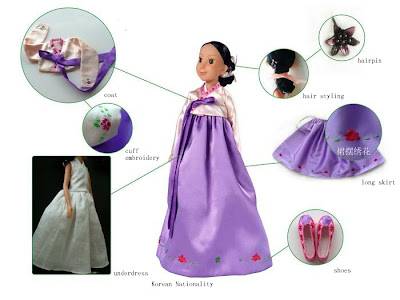
Japan Pavilion at 2010 Shanghai World Expo - Harmony of the Hearts, Harmony of the Skills
Theme: Harmony of the Hearts, Harmony of the Skills
National Pavilion Day: 12 June
Pavilion Area: Around 6,000 Square Meters
Location: Within Zone A of the Expo site
Pavilion Features:
The Japan Pavilion is a semi-circular structure, covered by a purple membrane material. Several antennae and caves make the pavilion a "breathing organism," which will express the harmony between the human heart and technology. The pavilion has been dubbed "Purple Silkworm Island" by Chinese people.

Highlight 1: Journey through Time
People will experience a journey from ancient times into the future. At the "past zone," the friendship between China and Japan will be highlighted. Historic cases such as a Chinese envoy's visit to Japan in the Tang Dynasty (618-907 AD) and expertise such as Nishijin weaving will be showcased. Japan's modern energy saving and water purification technologies will be exhibited in the "present zone." The exhibition will focus on three topics: water source protection, global warming and the aging problem. The "future zone" will feature a modern opera developed by both Chinese and Japanese directors.
Highlight 2: Opera
The centerpiece of Japan's Expo showcase is an opera about a rare bird that avoided extinction in Japan with the help of China. The crested ibis was declared extinct in Japan in the 1970s. The Chinese government began giving some of its stock to Japan in the 1990s and the birds managed to re-establish themselves in Japan. The opera combines both China's Kunqu opera and Japan's Noh drama to show friendship and exchanges between the two countries.

Highlight 3: Cutting-edge Technologies
Japanese companies will highlight cutting-edge technologies at the pavilion, including a machine that can turn sewage into drinking water, floorboards that can generate electricity when walked on as well as intelligent robots and the country's most advanced vehicles. Several robots will play violins for visitors,etc.
Previous series of 2010 World Expo: France Pavilion
Next series of 2010 World Expo: German Pavilion
* Original address of this China gift post: China Gift and Fine Arts & Crafts in China
National Pavilion Day: 12 June
Pavilion Area: Around 6,000 Square Meters
Location: Within Zone A of the Expo site
Pavilion Features:
The Japan Pavilion is a semi-circular structure, covered by a purple membrane material. Several antennae and caves make the pavilion a "breathing organism," which will express the harmony between the human heart and technology. The pavilion has been dubbed "Purple Silkworm Island" by Chinese people.

Highlight 1: Journey through Time
People will experience a journey from ancient times into the future. At the "past zone," the friendship between China and Japan will be highlighted. Historic cases such as a Chinese envoy's visit to Japan in the Tang Dynasty (618-907 AD) and expertise such as Nishijin weaving will be showcased. Japan's modern energy saving and water purification technologies will be exhibited in the "present zone." The exhibition will focus on three topics: water source protection, global warming and the aging problem. The "future zone" will feature a modern opera developed by both Chinese and Japanese directors.
Highlight 2: Opera
The centerpiece of Japan's Expo showcase is an opera about a rare bird that avoided extinction in Japan with the help of China. The crested ibis was declared extinct in Japan in the 1970s. The Chinese government began giving some of its stock to Japan in the 1990s and the birds managed to re-establish themselves in Japan. The opera combines both China's Kunqu opera and Japan's Noh drama to show friendship and exchanges between the two countries.

Highlight 3: Cutting-edge Technologies
Japanese companies will highlight cutting-edge technologies at the pavilion, including a machine that can turn sewage into drinking water, floorboards that can generate electricity when walked on as well as intelligent robots and the country's most advanced vehicles. Several robots will play violins for visitors,etc.
Previous series of 2010 World Expo: France Pavilion
Next series of 2010 World Expo: German Pavilion
* Original address of this China gift post: China Gift and Fine Arts & Crafts in China









